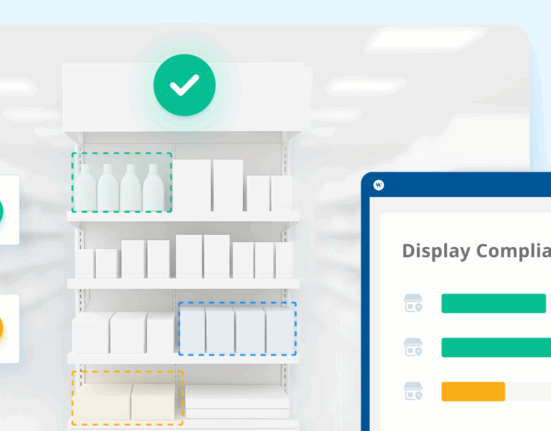Price elasticity is a critical concept in marketing, shedding light on how price changes impact a product’s demand. Understanding it is crucial for brands, as it equips them with the knowledge to make informed pricing decisions. In a market characterized by fierce competition and price-sensitive consumers, gauging price elasticity can be the strategic edge that brands need to prevail.
Successful implementation of a pricing strategy necessitates a comprehensive grasp of the product’s value, costs, market dynamics, and consumer behavior. This is where the concept of price elasticity comes into play. When brands understand how consumers will react to price changes, they can strategically adjust their pricing to either increase demand or maximize profits.
The concept of price elasticity is not static; it fluctuates according to various factors such as the availability of substitutes, the degree of necessity of the product, and changes in consumer income. Brands that proactively monitor and adapt to these changes can effectively leverage price elasticity to their advantage. No matter the circumstances, a robust understanding of price elasticity empowers brands to price their products to win.

What Is Price Elasticity?
Price elasticity measures how responsive the demand for a product is to changes in its price. A product is said to be elastic if a small price change significantly affects the quantity demanded, while it is inelastic if the average quantity being demanded remains relatively constant despite price changes. A product’s price elasticity can be influenced by several factors, such as:
- Customer Price Sensitivity: This refers to the degree to which consumers react to a change in a product’s price. If consumers are highly sensitive to price changes, the product is considered elastic. If they are less sensitive, the product is considered inelastic.
- Substitute Goods: The availability of substitute goods can greatly impact a product’s price elasticity. If a product has numerous substitutes, consumers can easily switch to a different product if the price of the original product increases. Thus, products with many substitutes tend to be more price elastic.
- Necessity: Products deemed as necessities or essential goods usually have inelastic demand. This is because consumers will continue to buy these products regardless of price changes. For instance, a rise in the price of bread or milk is unlikely to deter consumers from buying these essential items.
- Proportion of Income: If a product takes up a large portion of a consumer’s income, it is likely to be elastic. This is because consumers will be sensitive to any changes in the price of such a product.
- Time: The price elasticity of a product can also change over time. In the short term, a product might be inelastic because consumers cannot quickly find substitutes. However, in the long term, consumers may find substitutes or change their consumption habits, making the product more elastic.
All of these factors and more can impact a product’s price elasticity.
How to Calculate Price Elasticity
To calculate price elasticity, divide the change in demand (or supply) by the change in price. This figure determines the category your product falls into:
- A value of one means your product is unit elastic, with price changes reflecting an equal change in supply or demand.
- A value of >1 means your product is elastic, with price changes causing a greater than proportional change in supply or demand.
- A value of <1 means your product is inelastic, with price changes resulting in a smaller change in supply or demand.
Price Elasticity of Demand vs. Price Elasticity of Supply
Price elasticity of demand (PED) refers to a measure that demonstrates how the quantity demanded of a good responds to a change in its price. In essence, it provides an understanding of how sensitive the demand for a product is to changes in its price. For a product with high price elasticity, a minor price increase could lead to a significant drop in demand. Conversely, a product with low price elasticity would see little change in demand despite changes in price.
On the other hand, price elasticity of supply (PES) measures how the quantity supplied of a good reacts to changes in that good’s price. Much like the elasticity of demand, it reflects the degree of responsiveness of the quantity supplied to price changes. For instance, if a product has high price elasticity of supply, producers can quickly ramp up or reduce production in response to price changes. Yet, if a product has low elasticity of supply, producers may find it challenging to alter production levels rapidly in response to price fluctuations.
Both concepts, while related, focus on different aspects of the market. Price elasticity of demand looks at the consumer’s behavior and their sensitivity to price changes. In contrast, price elasticity of supply revolves around producers and their ability to react to changes in price. Understanding both aspects is crucial for businesses in strategic decision-making, price setting, and anticipating market dynamics.

Price Elasticity and Seasonality
Seasonality dramatically impacts price elasticity in various industries. During peak demand periods, customers are often willing to pay higher prices, making the product or service less price elastic. For example, in the travel industry, flight and hotel prices soar during holiday seasons due to increased demand. Thus, businesses can leverage this willingness to pay by adjusting prices according to seasonality, maximizing profitability.
Strategies to capitalize on seasonality involve proactive planning and dynamic pricing. Proactive planning requires businesses to forecast demand accurately based on historical sales data and market trends, allowing them to stock up and meet the demand during peak seasons. On the other hand, dynamic pricing involves adjusting prices in real-time to match demand. For instance, during high-demand periods, prices can be increased to improve profits, and during low-demand periods, businesses can offer discounts or promotions to stimulate sales and maintain cash flow. Both strategies, when implemented effectively, can help businesses significantly increase their profitability.
Customer Price Elasticity
Understanding the price sensitivity of customers is essential for any business aiming to maximize its profits. A high price elasticity implies that customers are highly responsive to price changes, while a low price elasticity indicates that changes in price have little impact on demand.
To measure customer price elasticity, businesses can use various methods. Observational methods rely on historical sales data to evaluate how past changes in price have impacted demand. Experimental methods, on the other hand, involve changing prices in a controlled environment to directly observe customer responses. These methods can be used in conjunction to give a comprehensive overview of customer price sensitivity.
When it comes to managing customer price elasticity, numerous strategies can be employed. For instance, tiered pricing offers different price points for various levels of a product or service, allowing customers to choose according to their willingness to pay. Bundling, another common tactic, involves selling multiple products together at a lower price than if they were sold separately. This not only provides value to the customer but also helps the company increase its overall sales volume.
Understanding price elasticity enables businesses to make strategic decisions and effectively respond to shifts in the market environment.
How Competitor Pricing Strategies Can Influence Elasticity
Knowing your competitors’ pricing strategies is critical in any business. A competitor’s pricing could be the benchmark for your own pricing strategy, or it could help you identify a gap in the market where your product or service could add value. It gives you a practical understanding of the market dynamics and helps in positioning your product strategically for optimal profit.
Competitor pricing significantly influences your price elasticity. If your competitors are offering similar products at a lower price, your demand becomes more price elastic. On the contrary, if your product offers unique features that justify a higher price, the demand could be less elastic. An understanding of your average price elasticity relative to competitor pricing allows you to make strategic decisions about price changes and promotions.
Various tools and techniques are available to monitor competitor pricing. Manual approaches include simply checking the competitor’s website or their products in stores. More sophisticated methods involve using price tracking software that automatically monitors and reports on competitor prices. These tools can provide real-time data, allowing you to respond swiftly to changes in the competitive landscape.
Best Practices for Adapting Your Pricing Strategy to Remain Competitive
As markets evolve and consumer preferences shift, maintaining a competitive edge means adapting your pricing strategy accordingly. Learn how to analyze market trends, assess competitor tactics, and pivot your strategy to meet customer demands while preserving your bottom line.
- Understand your customers’ price sensitivity: Understanding how price changes affect your customers’ buying behavior is key to setting effective prices.
- Implement dynamic pricing: As the market conditions and customer preferences constantly evolve, businesses need to adapt their pricing strategies accordingly. Dynamic pricing enables you to adjust prices based on real-time market trends.
- Consider Value-Based Pricing: Instead of basing pricing solely on cost or competition, consider the value your product or service brings to your customers. Value-based pricing can help you command a better price if your product offers unique benefits to the customer.
- Monitor Competitors: Regularly monitoring your competitors’ pricing can help you stay competitive in the market. However, avoid getting into a price war as it may lead to a race to the bottom.
- Communicate Value: Ensure your customers understand the value they are getting for the price they are paying. Clear communication about the features, benefits, and value of your product can help justify the price, especially if you are priced higher than your competitors.

Examples of Brands That Have Adapted Their Pricing Strategies to Consider Price Elasticity
Apple Inc.
Apple Inc. is a prime example of a company that successfully utilizes price elasticity to maximize profit. Apple’s products, especially its flagship iPhone, are considered inelastic. This means the demand for these products does not significantly decrease even when the price increases. Apple is able to charge higher prices for their latest devices due to the strong brand loyalty and perceived quality of their products. As a result, consumers are willing to pay a premium price, resulting in increased profit margins for Apple.
Walmart Inc.
On the opposite end of the spectrum, Walmart Inc. is a notable case of a brand that has adapted its pricing strategy with high price elasticity in mind. Walmart’s business model centers around offering everyday low prices to its consumers. Given that a majority of their products are highly price elastic, meaning a small percentage change in price would lead to a large change in demand, Walmart opts for a strategy of maintaining low prices. This helps the company to drive increased sales volume, even if it means lower profit margins on individual items. In turn, Walmart is able to maintain high total profits due to the sheer volume of its sales. This pricing strategy has helped Walmart to establish itself as a dominant player in the retail industry, appealing to cost-conscious consumers who are sensitive to changes in price.
Harnessing Price Elasticity
Understanding price elasticity enables businesses to make strategic decisions and effectively respond to shifts in the market environment. By grasping how price changes impact the entire demand curve itself, companies can better manage their product offerings, pricing strategies, and overall profitability. Ultimately, elasticity analysis contributes to a more robust and responsive pricing strategy that can weather changing circumstances.
It’s important to note that price elasticity isn’t a one-size-fits-all phenomenon. Factors such as product type, competitiveness of the market, and consumer perception all play significant roles in how elasticity is manifested. Different products and services have varying degrees of price sensitivity, and it is the task of the business to discern these nuances.
Remember, a well-informed pricing decision, guided by an understanding of price elasticity, can prove to be a game-changer for businesses. For highly elastic goods, even a slight pricing error can lead to substantial losses, while for inelastic goods, businesses might miss out on potential profits by not leveraging their pricing power.
Editor’s Note: Contributing writer is Matt Ellsworth. This post was originally published in July 2019 and has since been updated and refreshed for readability and accuracy.









